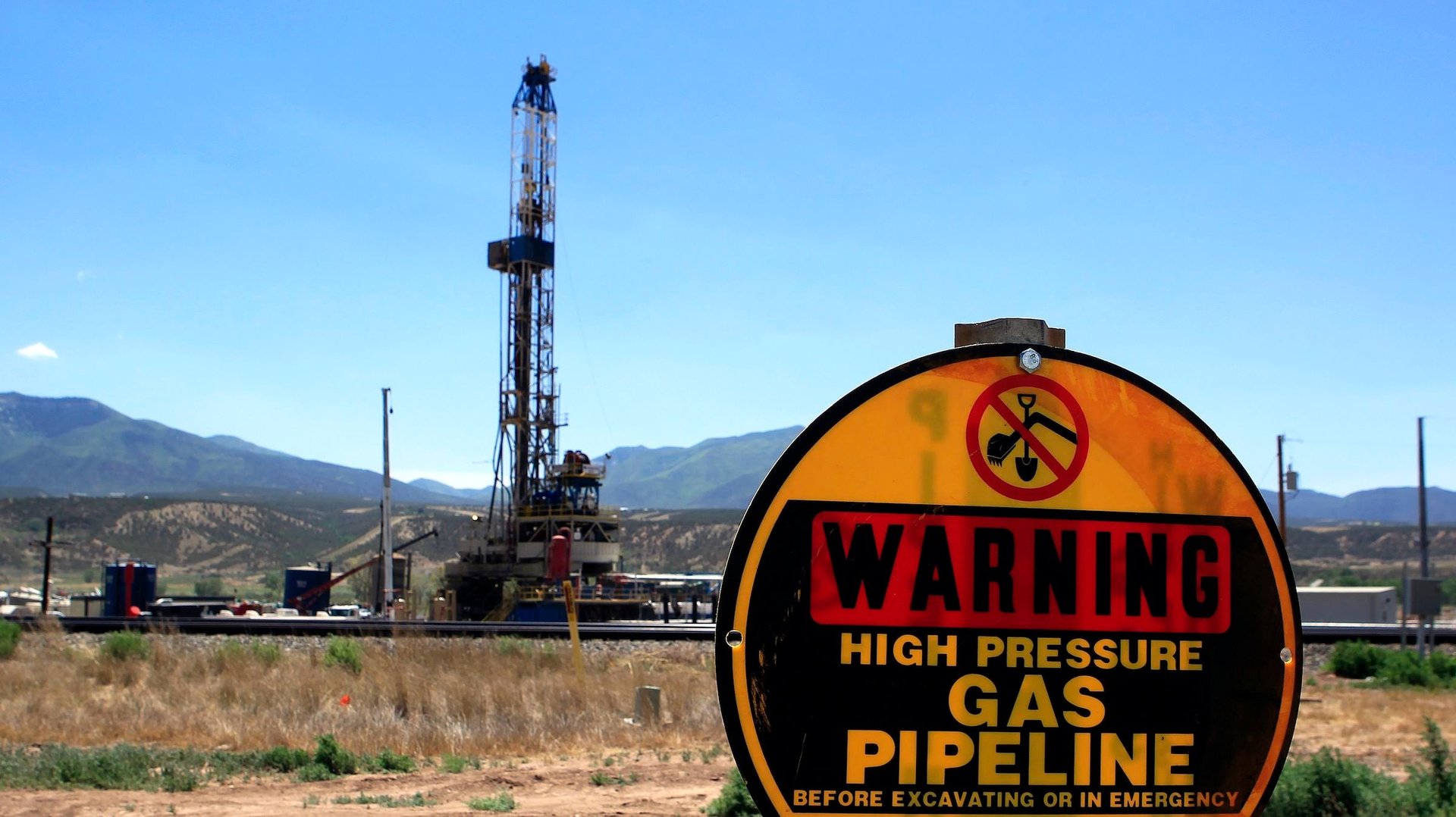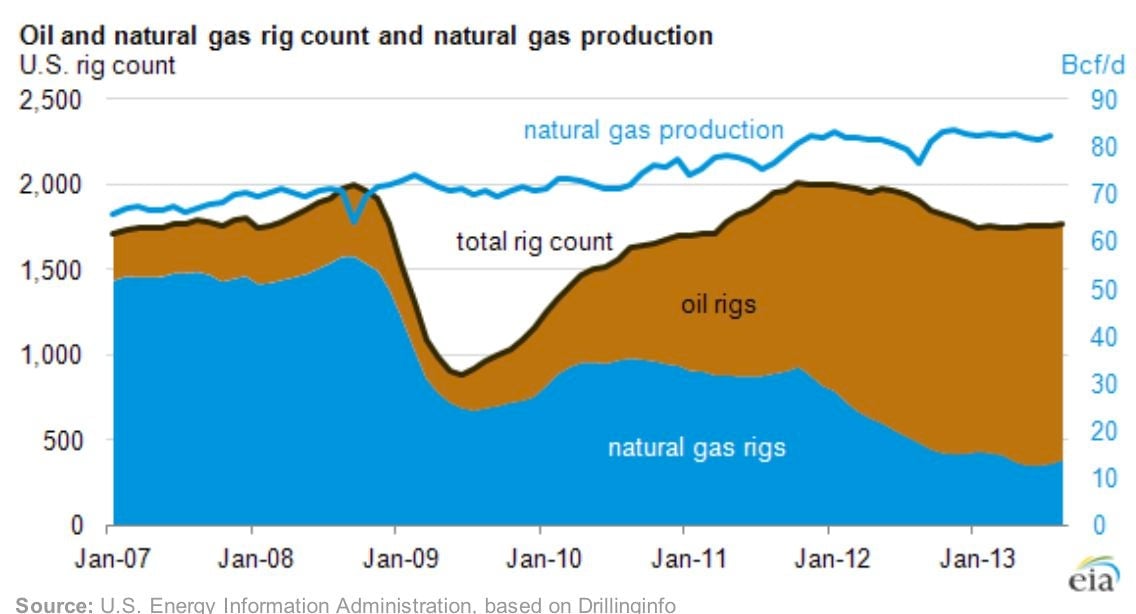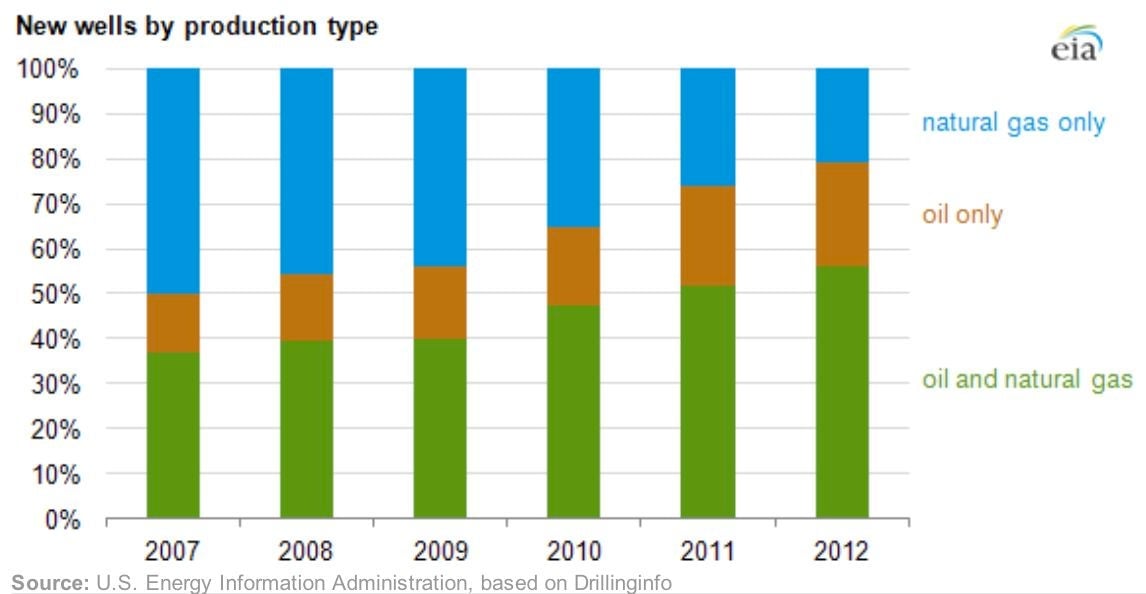How the US is boosting natural gas production with fewer wells
Estimating natural gas production in the US used to be pretty simple for government energy statisticians: They simply counted the number of drilling rigs. More rigs meant more natural gas. Not any more.


Estimating natural gas production in the US used to be pretty simple for government energy statisticians: They simply counted the number of drilling rigs. More rigs meant more natural gas. Not any more.
Over the past six years, advanced hydraulic fracturing, or fracking, has dramatically boosted natural gas production even as the number of drilling rigs has declined, according to a report released today by the US Energy Information Administration (EIA).

Another factor: Wells that can produce both oil and natural gas have have jumped from 37% in 2007 to 56% in 2012, allowing drillers to increase production without building more rigs.

Henceforth, the EIA will still count rigs when estimating the US’s natural gas production. But the agency will pay closer attention to the productivity of individual wells and where those wells are operating to gauge differences in average efficiency and productivity in different regions of the country. The EIA will also keep closer tabs on the decline in output from old wells.